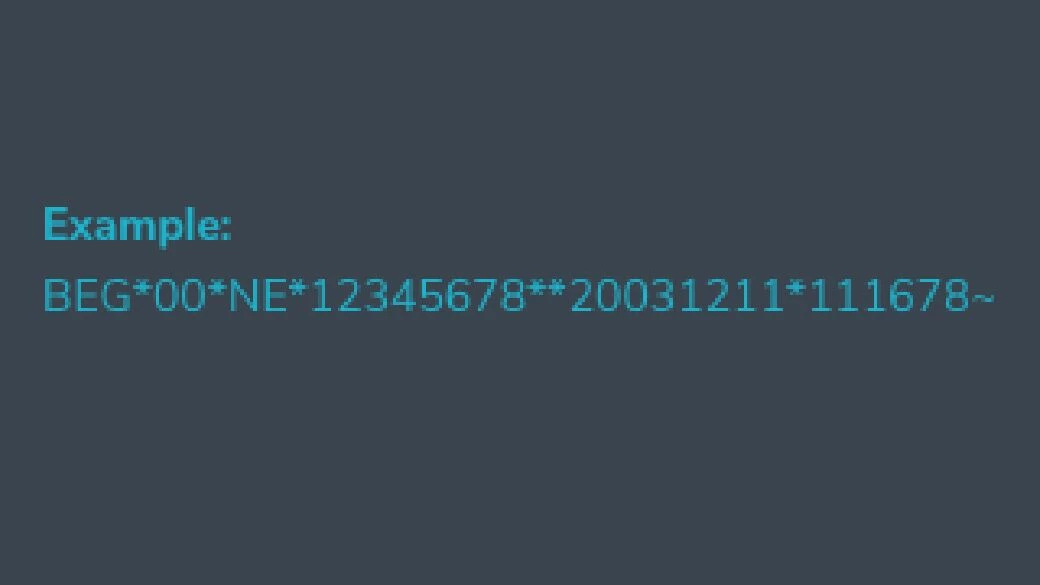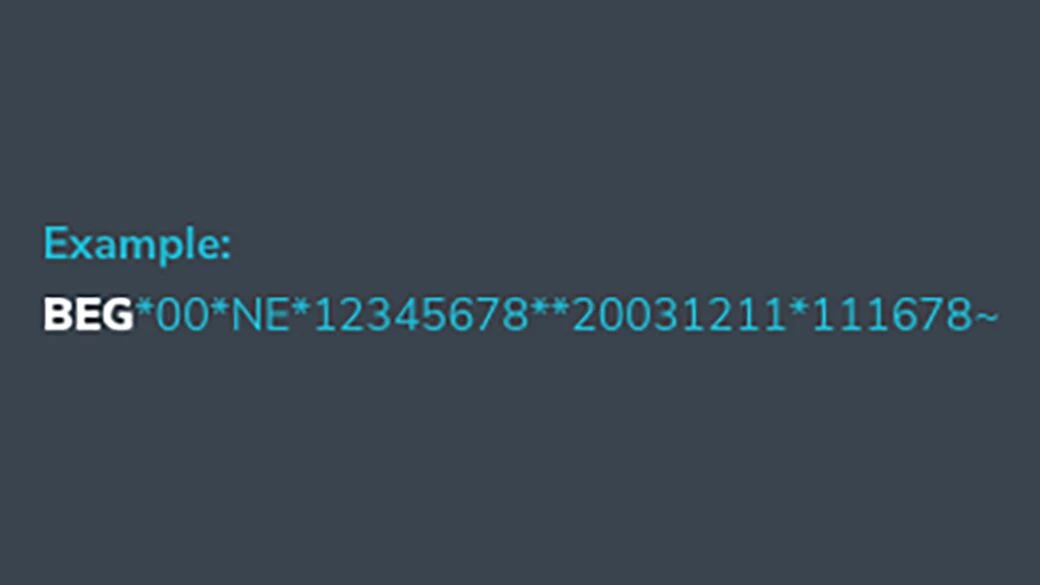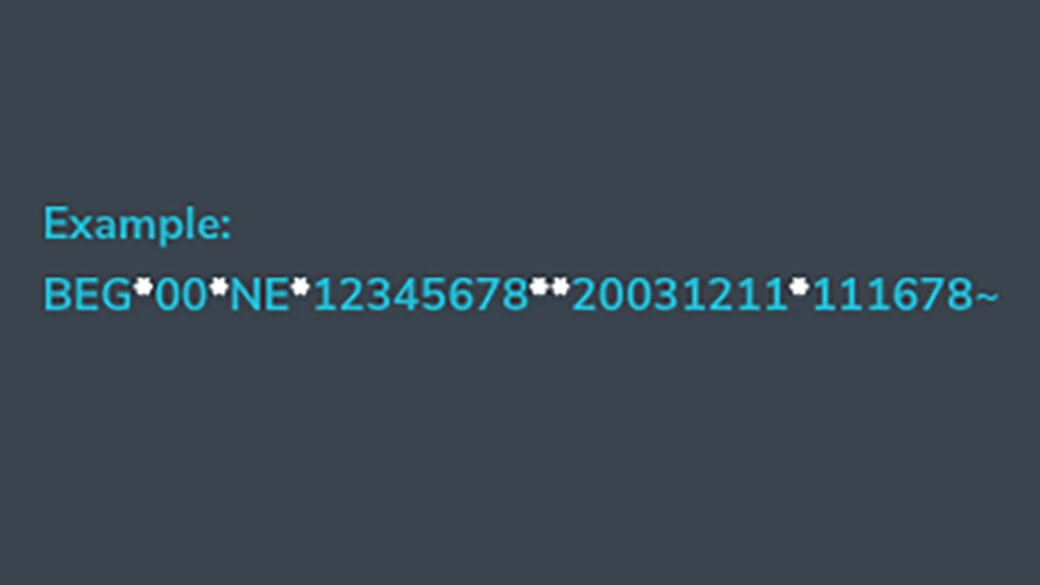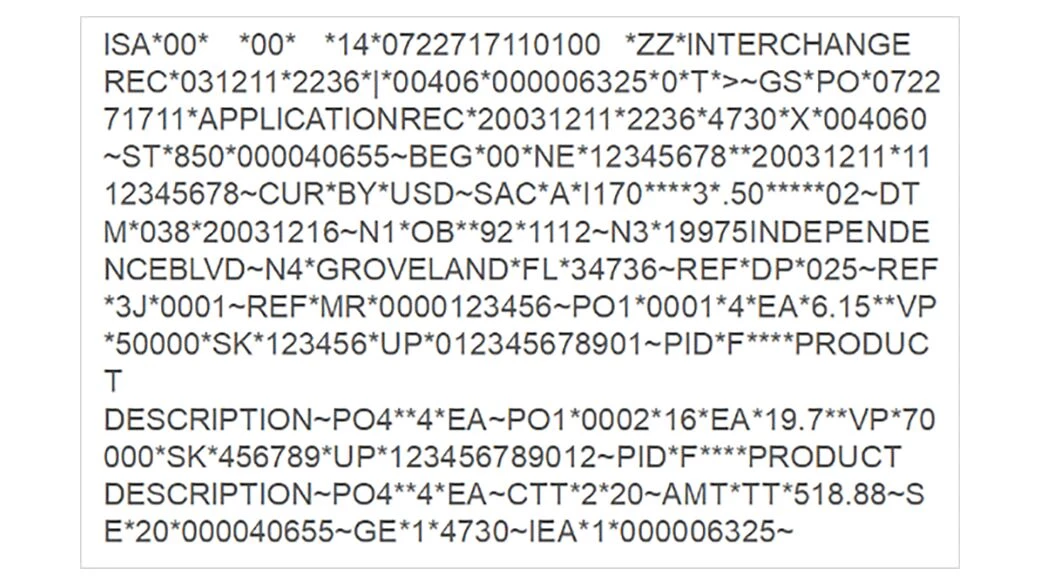EDI (electronic data interchange) is achieved once your organization and your trading partners both have an EDI software solution that communicates seamlessly together. But how does electronic data interchange work? EDI works by utilizing four main components that make up the EDI infrastructure:
To answer the question, “how does EDI work,” you’ll need to understand a few pieces and processes involved in EDI.


Before anything, your trading partners will each provide you with a unique implementation and onboarding guide. This will include the types of communication methods and versions, such as X12 or EDIFACT, and their relatable versions 4010, 5010 and other compliance standards. Included in the implementation guide will also be the frequency of transmission and the types of documents required to exchange.
Once you have the above information, you’re onto the next step of learning how EDI works. You can now prepare the documents for transmission. You will no longer need to print your EDI documents, such as a purchase order, since they will be filed electronically and communicated automatically. You may have different sources of data and methods available to create the EDI document, such as:
The next step is to begin the translation of your documents into an EDI format. Below, you will see raw EDI data and formatted EDI data. Your EDI translation software will take raw EDI data and reformat it to be easy to read and understand. The EDI data has a few variables you should understand when reading the transmission of your documents. The below information provides the foundation for understanding EDI variables and how they operate within your EDI software, helping to answer the question, “how does EDI work.”

Logically related data elements in a defined sequence.

The basic unit of information, a data element represents a singular fact; it may be a single character code, literal description or value number.

Separates the data elements and cannot be used within the data itself.

Unique characters that separate and terminate each segment.
Interchange envelope the electronic information that binds together a set of electronic documents sent from one sender to one receiver.
A segment that is used for transferring control information for grouping data segments.


Now, as your understanding of the question, “how does EDI work,” progresses, you can begin to feed your electronic documents through your translation and mapping software, converting your internal data format into the agreed-upon standard format using the appropriate segments and data elements.
Using the EDI software package your organization has purchased, you will need to map your documents between your trading partners to define how your internal data is being mapped into EDI data.
Translation software is available to suit all computing environments and budgets, from large organizations with thousands of transactions to smaller organizations that may only need web-based EDI software to process a few hundred transactions per week.
This process is for an in-house solution, not outsourced. Outsourced EDI solutions will be fully managed by your EDI provider.
The final stage of understanding how EDI works is to connect and begin transmitting your EDI documents with your trading partners. Once your documents have been translated internally to the compliant EDI format, they are ready to be transmitted to each of your trading partners. There are a few ways to do the translations:
This is the foundation on which electronic data interchange operates.
EDI is a critical component in any business’s organization to ensure optimum operational efficiency. At 1 EDI Source, we can help with our comprehensive suite of EDI software products, guiding you toward successful EDI implementation and integration processes that are simple and stress-free. Our team can review your business requirements and recommend an EDI solution that meets your needs and budget.
Download our EDI 101 Guide today to jump-start your EDI education and further answer the question, “how does EDI work.” Have a question or need more information? Read our EDI Buyers Guide, or reach out to our EDI experts today. Our EDI professionals are here to support you every step of the way.